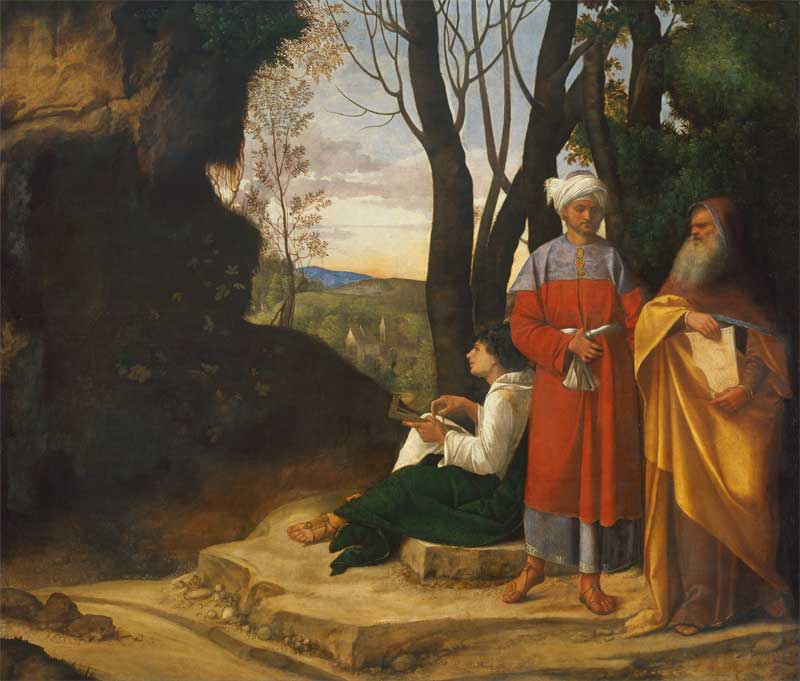
The three philosophers. Giorgione
around - , canvas, 123.5 × 144.5 cm
Vienna, Kunsthistorisches Museum
Gemäldegalerie, Cabinet 4
Accession number GG 111
Object history Collection of Archduke Leopold Wilhelm
-----
Die drei Philosophen. Giorgione
um 1508–1509, Leinwand, 123,5 × 144,5 cm
Wien, Kunsthistorisches Museum
---
---
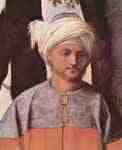 The Three Philosophers , detail
The Three Philosophers , detail
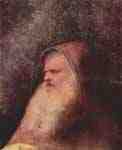 The Three Philosophers , detail
The Three Philosophers , detail
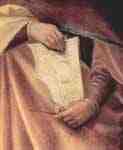 The Three Philosophers , detail
The Three Philosophers , detail
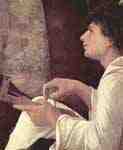 The Three Philosophers , detail
The Three Philosophers , detail
Fine Art Prints | Greeting Cards | Phone Cases | Lifestyle | Face Masks | Men's , Women' Apparel | Home Decor | jigsaw puzzles | Notebooks | Tapestries | ...
The Three Philosophers is an oil painting on canvas attributed to the Italian High Renaissance artist Giorgione. It shows three philosophers - one young, one middle-aged, and one old. The work was commissioned by the Venetian noble Taddeo Contarini, a Venetian merchant with an interest in the occult and alchemy. The Three Philosophers was finished one year before the painter died. One of Giorgione’s last paintings, it is now displayed at the Kunsthistorisches Museum in Vienna. The painting was finished by Sebastiano del Piombo.
Description
The Three Philosophers was finished around 1509, and the current name of the work derives from a writing of Marcantonio Michiel, (1484–1552) who saw it just some years after in a Venetian villa.[1] The three figures portrayed are allegorical: an old bearded man, possibly a Greek philosopher; an Arab philosopher; and a sitting young man, enclosed within a natural landscape.[2] In the background is a village with some mountains, the latter marked by a blue area whose meaning is unknown. The young man is observing a cave on the left of the scene, and apparently measuring it with some instruments. Since the end of the 19th century scholars and critics rejected on various grounds the earlier view that it is a representation of the three Magi gathered before Jesus' grotto.[3][4]
Interpretations
Archduke Leopold Wilhelm and the artist in the archducal picture gallery in Brussels. The painting shows rather faithfully the original painting as displayed in the dukes collection, high up left corner, by David Teniers the Younger, (c. 1650, in Kunsthistorisches Museum, Vienna)
Various interpretations about Giorgione's picture have been proposed. The Three Philosophers, the old man, the Arab figure and the young man, could be a depiction of transmission of knowledge, the Transmission of the Classics from the ancient Greeks philosophy through the Arab translations, that became actual again around the Italian Renaissance. The old man is representing a Greek philosopher, such as Plato or Aristotle, whose writings have been copied and transmitted through the Arab philosophers to the Italian Renaissance.[2] The Arab philosopher is possibly representing the polyhistor Avicenna or Averroes, both Arab philosophers and Arab scientists from the Islamic Golden Age.[5][6][7]
The young man could be seen as the new Renaissance science with roots in the past, looking into the empty darkness of the cave, symbolizing the yet undiscovered secrets.[2] The cave might also symbolize the philosophic concept of Plato's Cave[8]
New hypotheses about the figures, their identities and the symbolism are still currently advanced. In a note about the picture G. C. Williamsom, early in the 20th century, stated that "It represents Evander and his son Pallas showing to Aeneas the future site of Rome".[9] The possibility that the three men are King Solomon, Hiram I, King of Tyre, and Hiram Abiff has been advanced by Neil K. MacLennan and Ross S. Kilpatrick.[10]
It has been suggested that the figure of the young man can be inscribed neatly in a right-angled triangle for which the Pythagorean theorem applies. Karin Zeleny, relying on a reading of Polydore Vergil[11] has proposed that the philosophers are the teachers of Pythagoras - Pherecydes of Syros and Thales. Thales has been painted as a Jew, while Pherecydes was mistakenly believed to be a Syrian.[12] This interpretation was modified by Frank Keim who claimed that the older philosopher is in fact Aristarchus of Samos[13]
Other scholars have asserted that the figures are typical representations for three stages of humanity (youth, middle and old age), three epochs of European civilization (Antiquity, Middle Age, Renaissance), the three Abrahamic religions or some combination of such general conceptions.[14]
Augusto Gentili proposed that the picture illustrates the waiting for the Antichrist, based on conjunctionist astrology. On the sheet held by the oldest philosopher the word 'eclipsis' and an astronomical diagram can be seen. The great conjunction of 1503 and the eclipse the same year were believed to be signs announcing its coming.[15]
The painting Archduke Leopold Wilhelm in his Gallery in Brussels by David Teniers the Younger, shows rather faithfully the original painting about 150 years later, as displayed in the collection, high up left corner, painted c. 1650.[16] Tenier's copies that he made of the exhibits have long been recognised as a valuable historical resource.[17]
This painting is now displayed at the Kunsthistorisches Museum in Vienna. While working on this picture, David Teniers the Younger made tiny separate copies of each and every picture as a study for the final big painting, depicting the duke's collection. In this small copy, that mesures 21.5 x 30.9 cm he put a trident in the older man's hand, but that was not in the original painting nor depicted in the final painting, the Archduke Leopold Wilhelm in his Gallery in Brussels.[18] [19] In the original painting the old man holds only a script. This possibly could have been an allusion to the weapon of Poseidon, the god of the sea in classical mythology, but it is David Teniers the Younger's own speculation.
References
Marcantonio Michiel, Notizie d’opere di disegno, manuscript, Venice (see Zeleny)
Beckett (1994), p. 167
Settis S.,(1990), Giorgione's Tempest: Interpreting the Hidden Subject,University Of Chicago Press
"Avicenna-and-Averroes -The Three Philosophers". lesmaterialistes.com. Retrieved October 2014.
Beckett, Wendy (1994), The Story of Painting, The Essential Guide to the History of Western Art, Dorling Kidersley, ISBN 978-0751301335
www.britannica.com
"Avicenna". global.britannica.com. Retrieved October 2014.
"Avicenna-and-Averroes -The Three Philosophers". lesmaterialistes.com. Retrieved October 2014.
G. C. Williamson, ed.,(1903), The Anonimo. Notes on Pictures and Works of Art in Italy Made by an Anonymous Writer in the Sixteenth Century, (trans. Paolo Mussi), London: George Bell and Sons,p102 [1]
by Neil K. MacLennan and Ross S. Kilpatrick, King Solomon & the Temple Builders: A Biblical Reading of Giorgione`s Painting "The Three Philosophers" Heredom 9(2001)
Polydore Vergil, De inventoribus rerum, libri tres, Venetia, 1499
Zeleny K., The Giorgione Code, Kunsthistorisches Museum Papers
Keim F., Die Entdeckung der Jupitermonde 105 Jahre vor Galileo Galilei, 2009, Frankfurt am Main: Peter Lang Verlag.
see Settis S., MacLennan and Kilpatrick, 'op. cit'
Gentili A., Giorgione, Giunti Editore (coll. Dossier d'art), 1999, (Googlebooks)
"David Teniers and the Cabinet of Archduke Leopold William". courses.washington.edu. Retrieved October 2014.
"historians of Nederlandish art - David Teniers’s Theatrum Pictorium". www.hnanews.org. Retrieved October 2014.
"venetian-art-in-late-17th - showing David Teniers the Younger's copy.". renruskin.blogspot.se. Retrieved October 2014.
Gombrich E."A note on Giorgione's 'Three Philosophers' " Burlington Magazine, 128 (1986), p. 488 [JSTOR]; Only a copy made by David Teniers the Younger
Retrieved from "http://en.wikipedia.org/"
All text is available under the terms of the GNU Free Documentation License


